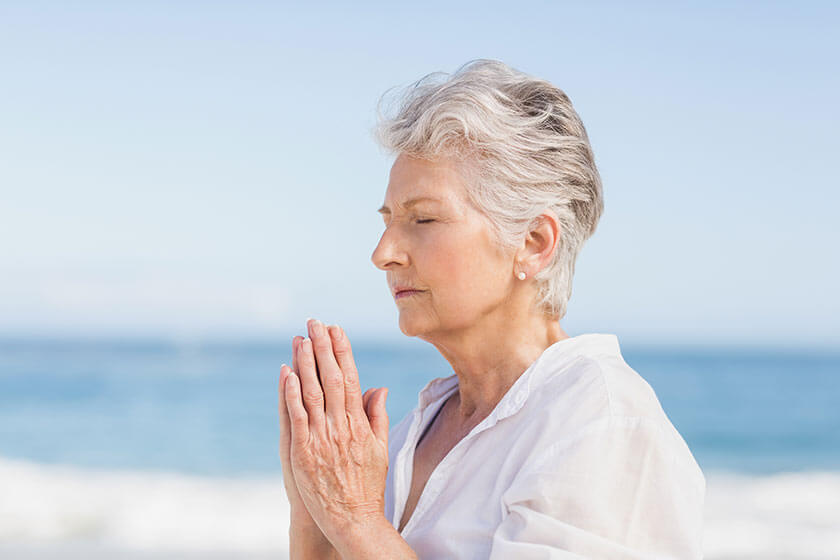For retirement age adults, what is one of the most popular mental health and meditation practices? Answer: Mindfulness. What’s the purpose of mindfulness? Answer: To, in the present moment, increase awareness of experiences, feelings, and thoughts – without worrying about the future or the past.
Mindfulness activities for the elders can help reduce stress, depression, anxiety, and address numerous other concerns about mental health. In fact, there are a number of mindfulness activities that today’s retirees may want to consider for stress relief, healthy relaxation, and more. Mindfulness can be an extremely rewarding practice, that’s actually accessible for people of all backgrounds and all ages.
Though developing the skill of mindfulness is a good idea for anyone and everyone, retirees, in particular, can benefit.
Benefits of Mindfulness
Before we move on to types of mindfulness activities, let’s quickly look over the benefits that can be enjoyed through them:
- Mood stabilization
- Cognitive strengthening
- Memory improvement
- Stress relief
If you live in a retirement community that promotes exercise, health and wellness programs, etc., consider introducing mindfulness to your friends and possibly even the care team. Now let’s take a look at some exercises to help encourage mindfulness.
Mindful Eating
Good for both your mental and physical health, mindful eating is particularly useful for individuals who tend to eat a bit too much. Most people, when they fill their plate with food, aren’t paying particular attention. While eating and practicing mindfulness, however, it’s easier to stop when you’re full because you are eating slowly, with focus.
How does your food smell, feel, and look? Pay attention, as you eat, to its texture and taste. Before you get ready for that next bite, make sure you completely finish the one you’re on. During your meals, minimize distractions. This allows your full focus to be on the items in front of you, on your plate.
Keeping a Journal
It’s easier to focus on your feelings and thoughts when you write in a journal. It can be as unstructured or as structured as you want your mindfulness journaling to be. Some people try to follow a pattern or theme while others simply jot down whatever comes to mind. To start your day in the right mindset, you may choose to do your writing first thing in the morning. Describe your mood. What are your intentions for the day? If you choose to journal at the end of the day, consider writing down all the things that happened during the day that you are thankful for.
Walking
If you’re a retired individual who enjoys being active, one good option is mindful walking. Some people, while they’re sitting quietly, have a hard time staying focused. While they’re moving – as with walking – they can practice mindfulness more easily. When you take a walk, find a peaceful, quiet place to do so. Pay particular attention to each step, the rhythm, the ground under your feet. Make your surroundings part of your focus. Are you warm or cool? What do you hear and see? Be fully aware of your mind, your body, and your environment as you walk.
Being Aware of Your Body
Similar to the following breathing exercises, body awareness exercises, rather than calling attention to your breath, focus on your body. Get comfortable. Take particular notice of your feet. Do you feel the sensation of your shoes or socks? Do you feel the floor beneath your feet? Next, take notice of your calves and ankles. Work your way up your body, gradually. How does every part feel? As you are feeling, release any tension you may have. Note your emotions, feelings, and thoughts as you scan your body.
Breathing Exercises
Seek out a comfortable area. Sit down and close your eyes. You’re going to practice mindful breathing. Think about your breath and nothing but your breath. As you breathe in and out, notice how your body feels. Don’t try to follow a pattern or slow down your breathing. But rather, as you breathe naturally, pay close attention.
So you can adjust to the practice of mindfulness, keep your first few sessions very short. To start, five minutes should suffice. As you get more comfortable with breathing meditation, you can gradually increase the length of your sessions.
Hidden Meadows On The Ridge – Mindfulness Through Wellness Programs
Hidden Meadows On The Ridge offers our Dimensions Health and Fitness program. Across the following aspects, this holistic wellness program is designed to promote mindfulness and health:
- Emotional
- Medical
- Physical
- Spiritual
- Intellectual
- Social
Contact us today at 267-682-6538 to find out more about the different health and fitness programs that we organize.







